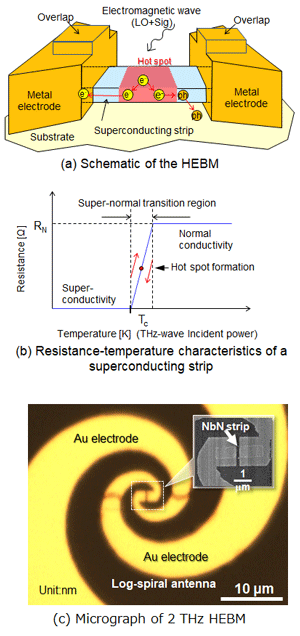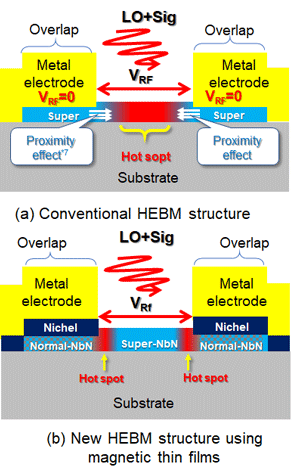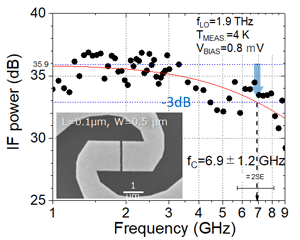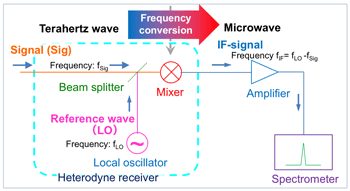Development of High-sensitivity, Wide-IF Band Heterodyne Receiver in Terahertz Frequency Range
- Realized by NICT's original superconducting device structure using magnetic materials -
September 16, 2020
National Institute of Information and Communications Technology
Abstract
Background

Achievements


Future Prospects
Paper details
Glossary

[Click picture to enlarge]

[Click picture to enlarge]
superconducting proximity effect (see Figure 2 (a))
Technical Contact
KAWAKAMI Akira
Frontier Research Laboratory
Advanced ICT Research Institute
NICT
Tel: +81-78-969-2193
E-mail:



















Media Contact
HIROTA Sachiko
Press Office
Public Relations Department
E-mail:





















